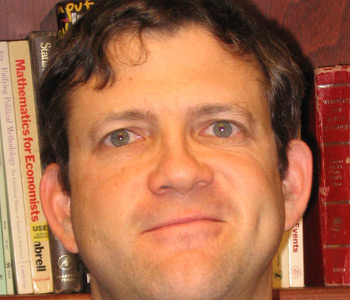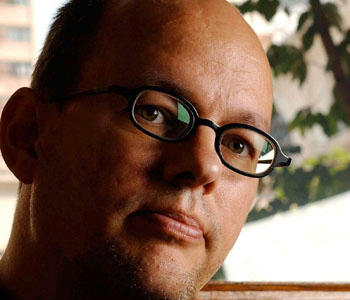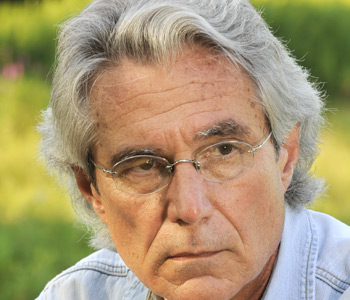Kathryn Sikkink
The Justice Cascade: How Human Rights Prosecutions Are Changing World Politics
W. W. Norton
384 pages, 6 1/8 x 9 1/4 inches
ISBN 978 0393079937
The Justice Cascadeprovides an overview and an evaluation of one of the most important changes in global politics: the rise of individual criminal accountability for human rights violations. In it, I track the birth and spread of the revolutionary idea and practice that domestic and international courts can hold individual governmental figures, even heads of state, personally accountable for human rights violations. I argue that these powerful practices have the potential to deter future human right violations and help transform domestic and international relations in the 21st century.
The term "justice cascade" describes the increasing speed and power with which the legal ideas and practices of human rights prosecutions spread around the world. In this book, I explain why this new trend has emerged and evaluate its impact.
I have organized my analysis into three parts around three big questions. The first part of the book uses a historical approach to answer the question of emergence: what are the origins or sources of new ideas and practices concerning individual criminal accountability for human rights? In Chapters 2 and 3, I trace these origins by looking at the first three cases of domestic trials in Greece, Portugal, and Argentina. In the second part of the book, I try to answer how and why these ideas spread or diffused across regions and, ultimately, across the globe. In Chapter 4, I examine the diffusion of prosecutions, first in domestic courts, and later in foreign courts and international tribunals. The third part of the book tackles questions about effects: what is the impact of these trials? Can human rights prosecutions actually help prevent future human rights violations? Chapters 5 and 6 present work I have done demonstrating that these trials are not dangerous, as some worry, and that they can actually improve protection for human rights. But a skeptic will ask, “If this is really a global trend, what difference does it make for powerful countries like the United States or China?” To begin to answer this question, Chapter 7 focuses on US practices during the “war on terror.”
The book is designed to be read straight through, from front to back. However, readers who are mainly interested in the effectiveness of human rights prosecutions could read chapter one, and then move directly to the third part, which addresses effectiveness, especially chapters five and six. The final chapter will speak especially to those interested in international relations theory.
The first source of the justice cascade was the post-World War II trials in Nuremburg, where Nazi officials were held accountable for war crimes and crimes against humanity. These well-publicized trials established a precedent for international legal prosecution that, though rarely invoked in the decades that followed, laid the foundations for the development of modern international prosecuting bodies such as the International Criminal Tribunal for the former Yugoslavia and the International Criminal Tribunal for Rwanda, and later the International Criminal Court.
The second source of the justice cascade came from individual countries that launched human rights prosecutions through their own courts: Greece, Portugal, Argentina, Chile, and others. These prosecutions, despite their mixed record of success, placed the legal power of prosecution in the domestic courts and the hands of the people. The third source is a constellation of crucial international treaties—such as the 1948 Geneva Convention and the 1987 Convention Against Torture—that provided a shared international framework for holding individuals criminally accountable for human rights violations.
Together these three sources merged into a surprisingly powerful human rights movement that has touched all parts of the world, although it has been strongest in Latin America and Europe.
All revolutions provoke a reaction, and the justice cascade has a formidable number of critics and opponents : from academic critics who question the value of human right prosecutions to world leaders who fear the cascade represents a threat to their sovereignty. These critics claim that human rights prosecutions are international interventions that destabilize countries and encourage further human rights abuses.
Based on extensive study—including one of the first major statistical analyses of the trend—the book dismantles these arguments. I show that most human rights prosecutions are local affairs, with citizens mobilizing their domestic courts to bring justice to rights abusers. The numbers further show that prosecutions have a deterrent effect: countries that prosecute rights abusers often later enjoy better human rights situations than countries that fail to do so. I then use this evidence to explore the U.S. case of torture and ill-treatment of detainees during the Bush administration, and ask if the United States has been immune to the Justice Cascade.
As I explain in the book, I came to this issue very early, first as a young exchange student living in Uruguay during the worst days of the dictatorship, later as a staff person with a human rights organization working on Latin America based in Washington, D.C., and finally as an academic researching the spread of human rights ideas and practices in the world. This book is a story not only about changes in the world, but also about my own personal and scholarly journey. In some ways, I came upon the unfolding processes of justice by accident. But this discovery has shaped my outlook on the world and its possibilities, leaving me at times both frustrated and inspired.
I would hope your “just browsing” readers would read the introduction first. In the first seven pages they will encounter both the main puzzle of the book, and the personal and professional path that led me to the project. I would hope that these first pages might engage their interest and draw them into the rest of the book. In this first section, and periodically throughout the book, I try to tell the stories of real people who helped imagine and create the justice cascade.
One problem with much of academic writing is that real people are often absent from its stories. But at the beginning of any norm cascade, like the justice cascade, specific people work hard to propose new ideas and policies, and they share their ideas with others who carry them to new settings. The early adopters of new human rights norms don’t contract the ideas through the air like a virus, but always through struggle, innovations, and often just plain luck.
The justice cascade was not spontaneous, nor was it the result of the natural evolution of law or global culture in the countries where the prosecutions occurred. These changes in ideas were fueled by the human rights movement. The cascade started due to the concerted efforts of small groups of public interest lawyers, jurists, and activists who pioneered strategies, developed legal arguments, recruited plaintiffs and witnesses, marshaled evidence, and persevered through years of legal challenges. The work of these norm entrepreneurs was facilitated by two broader structural changes in the world, the third wave of democracy and the end of the Cold War. The first multiplied the number of transitional countries open to the trends described here, and the second opened space for countries to consider a wider range of policy options.
This book tells the whole diffusion story of human rights prosecutions from its beginnings with advocates in Athens and Buenos Aires to the rapid spread of ideas and practices of individual criminal accountability in the early 21st century.
I hope the reader will understand that I don’t have a simple recipe to offer for transitional justice. Each country will find its own way, and craft its unique response. But I do offer some preliminary policy advice, both from many years of observing countries make choices about how to address the human rights violations that happened in the past, and from the quantitative and qualitative analyses on the effectiveness of trials. I believe that this advice is directly relevant to the US as we grapple with questions of accountability for torture. The most striking fact that stands out in all the research for this book is that it has not been easy for any country in the world to confront its past. Almost all leaders, originally faced with the dilemmas of accountability, have wanted to turn the page and look toward the future, not the past. Even in countries like Greece and Argentina, where there were strong popular demands for accountability, leaders have faced agonizing choices that they feared could lead to military coups.
When they are making tough decisions about accountability, governments should keep in mind the results of systematic empirical research. First, there is now strong reason to believe that the use of human rights prosecutions in transitional countries is associated with improvement in human rights. Scholars still don’t agree entirely about the conditions under which those improvements occur, but most research has found correlations between the use of prosecutions and improvements in human rights. Second, I can say with certainty that governments do not have to choose between eithertruth or justice. It appears that most transitional justice policies are complementary, not mutually exclusive. This does notmean that government must or even should immediately and simultaneously launch truth commissions and far-reaching prosecutions. It just means that over time successful transitional societies have usually used combinations of restorative and retributive justice, and that these have been more likely to be complementary strategies than mutually exclusive ones.
Finally, my cases show that the desire for justice is very persistent, and that if political conditions for prosecutions are not right immediately after transition, such prosecutions can be held later. Countries (and victims) don’t have to choose to forgive or to punish. Indeed many survivors of human rights violations, may find it easier to forgive if there has been some kind of accountability. Most importantly, we do not have clear evidence yet that governments have to choose between peace and justice. It is time to put false dichotomies behind us and begin a more nuanced debate about the conditions under which trials can contribute to improving human rights and enhancing rule of law systems, or what sequence or judicious combination of transitional justice mechanisms can help build democracy and resolve conflicts.




We don't put paywalls. We don't distract you with ads. We don't sell your data.
Please help to keep this running!